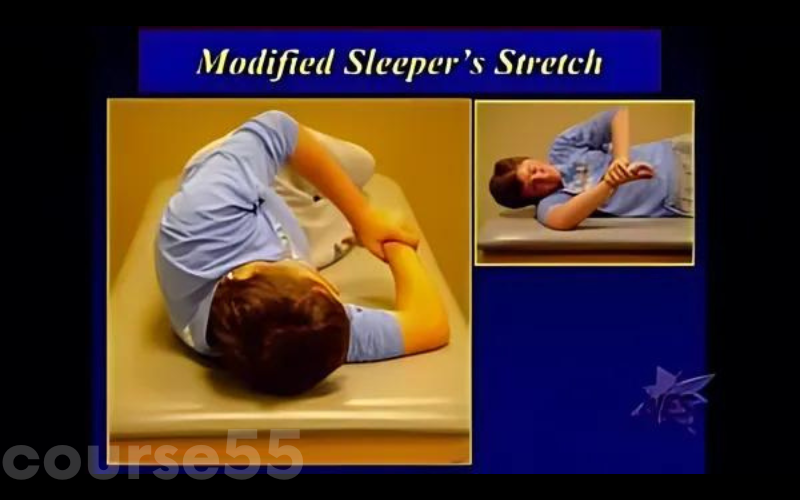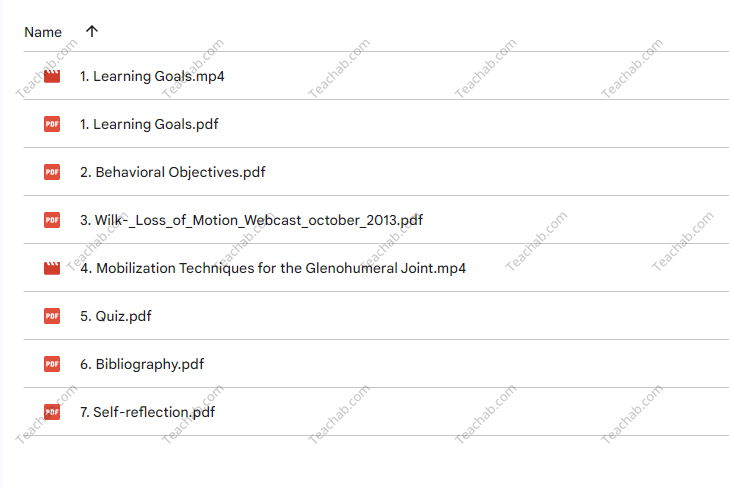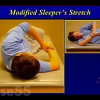Wilk PTI Online: New Techniques & Joint Mobilization to Increase Glenohumeral Joint Motion By Kevin Wilk
$45.00 $15.00
Wilk PTI Online: New Techniques & Joint Mobilization to Increase Glenohumeral Joint Motion
Content Proof:
In a world where physical therapy and rehabilitation are constantly evolving, the need for innovative solutions to long-standing problems has never been greater. The “Wilk PTI Online: New Techniques & Joint Mobilization to Increase Glenohumeral Joint Motion” course, directed by the renowned Kevin Wilk, stands at the forefront of this evolution. This online program is designed not just to inform, but to transform the way we approach glenohumeral joint mobility issues.
By addressing the innate instability and extensive range of motion of the shoulder joint, practitioners can employ strategies that foster healing and improve functional outcomes. Through a combination of scientific evidence, clinical insights, and hands-on techniques, participants will emerge better equipped to deal with the complexities of shoulder dysfunction. This course promises not only to be informative but also fundamentally transformative for physical therapists and rehabilitation professionals.
Understanding Glenohumeral Joint Mobility Issues
The Complexity of Glenohumeral Joint
The glenohumeral joint, often referred to as the shoulder joint, is a complex structure characterized by its high degree of mobility and inherent instability. It is the most mobile joint in the human body, allowing for rotational and directional movement that is crucial for everyday tasks. However, this freedom comes at a price injuries and pathologies are common. Recent studies show that approximately 50% of athletes experience shoulder injuries at some point in their careers, underlining the need for advanced intervention techniques.
Mobility Limitations and Their Implications
Mobility limitations in the glenohumeral joint can drastically affect a patient’s quality of life. The pain and restricted movement not only hinder daily activities but also negatively impact mental well-being. Imagine a ballet dancer, unable to perform due to a frozen shoulder, or an athlete sidelined by a rotator cuff tear. The emotional toll of such limitations can be as challenging as the physical impediments. This course provides the resources necessary for therapists to address these multifaceted issues, combining scientific knowledge with practical application.
Evidence-Based Approaches
In the ever-evolving world of rehabilitation, evidence-based practices are paramount. The Wilk PTI course is grounded in empirical research and clinical evidence, ensuring that participants are not merely learning techniques but are equipped with the rationale behind them. With the integration of dynamic stabilization strategies and manual therapy techniques, therapists will be trained to effectively assess and treat glenohumeral joint pathologies. The focus on applying these advanced methods ensures that therapists can optimally support their patients’ recovery processes.
The Course Curriculum: A Comprehensive Overview
Detailed Lectures and Interactive Components
The curriculum is rich with detailed lectures, offering participants insights into the latest theories and practices in shoulder rehabilitation. Educational content is bolstered by video demonstrations that provide visual representations of the techniques being taught. This multimedia approach makes complex concepts more digestible, allowing for a deeper understanding of clinical applications.
- Lecture Topics include:
- Dynamic stabilization strategies
- Assessment techniques for shoulder mobility
- Evidence-based manual therapy methods
The inclusion of live patient examples serves as a critical component, showcasing real-life applications of the techniques. Additionally, the interactive question-and-answer sessions allow participants to engage directly with Kevin Wilk, offering a unique opportunity for clarification and deeper exploration of the course material.
Hands-On Techniques and New Approaches
One of the key features of the Wilk PTI course is its emphasis on hands-on techniques and novel approaches to treating glenohumeral joint pathologies. The training is not just theoretical; participants are encouraged to practice what they learn, ensuring that they can confidently apply these methods in their clinical settings. Techniques such as joint mobilization and therapeutic exercises are vital for restoring mobility and function.
- Techniques Covered:
- Joint mobilization methods
- Therapeutic exercises for muscular balance
- Neuromuscular re-education strategies
The course leverages the power of both theory and practice, emphasizing the importance of an integrated approach to rehabilitation.
The Importance of Clinical Evidence in Practice
Effectiveness of Joint Mobilization
The choice to emphasize joint mobilization within the course is rooted in extensive research demonstrating its effectiveness in treating shoulder dysfunction. A study published in the Journal of Orthopaedic & Sports Physical Therapy highlighted outcomes showing that patients undergoing joint mobilization reported significant pain relief and improved range of motion.
- Research Findings:
- 70% of patients experienced improved mobility.
- Pain scores decreased by an average of 50%.
- Enhanced functionality was observed in daily tasks.
Such findings reinforce the necessity of incorporating joint mobilization strategies into routine practice, especially for conditions that involve the glenohumeral joint.
A Continuous Learning Journey
Participating in the Wilk PTI course represents more than just an educational experience; it symbolizes a commitment to continuous professional growth. Physical therapists and rehabilitation professionals are encouraged to stay abreast of emerging techniques that align with current best practices. The field is not static; new research and methodologies are constantly emerging, necessitating ongoing education and adaptation to ensure optimal patient outcomes.
Conclusion
The “Wilk PTI Online: New Techniques & Joint Mobilization to Increase Glenohumeral Joint Motion” course stands out as a vital resource for physical therapists seeking to enhance their skill set in shoulder rehabilitation. Through its blend of scientific knowledge, practical application, and interactive learning, participants are prepared not only to treat existing conditions but also to prevent future issues effectively. Kevin Wilk’s insights serve as a guiding light in the intricate field of glenohumeral joint mobility.
In an era where efficiency and effectiveness define success, this course equips therapists with the tools they need to make a tangible difference in their patients’ lives. In the complex dance of rehabilitation, understanding and mastering the nuanced movements of the shoulder can indeed be the key to unlocking a world of possibilities for both patients and practitioners alike.
Frequently Asked Questions:
Business Model Innovation: We use a group buying strategy that enables participants to share costs and access popular courses at lower prices. This approach helps individuals with limited financial resources, although it may raise concerns among content creators regarding distribution methods.
Legal Considerations: Our operations navigate complex legal issues. While we do not have explicit permission from course creators to resell their content, there are no specific resale restrictions mentioned at the time of purchase. This lack of clarity allows us to offer affordable educational resources.
Quality Control: We guarantee that all course materials provided are identical to those offered directly by the creators. However, please note that we are not official providers. As a result, our services do not include:
– Live coaching calls or sessions with the course author
– Access to exclusive author-controlled groups or portals
– Membership in private forums
– Direct email support from the author or their team
Our goal is to make education more accessible by offering these courses independently, without the additional premium services available through official channels. We appreciate your understanding of our unique approach.
Be the first to review “Wilk PTI Online: New Techniques & Joint Mobilization to Increase Glenohumeral Joint Motion By Kevin Wilk” Cancel reply
You must be logged in to post a review.



















Reviews
There are no reviews yet.